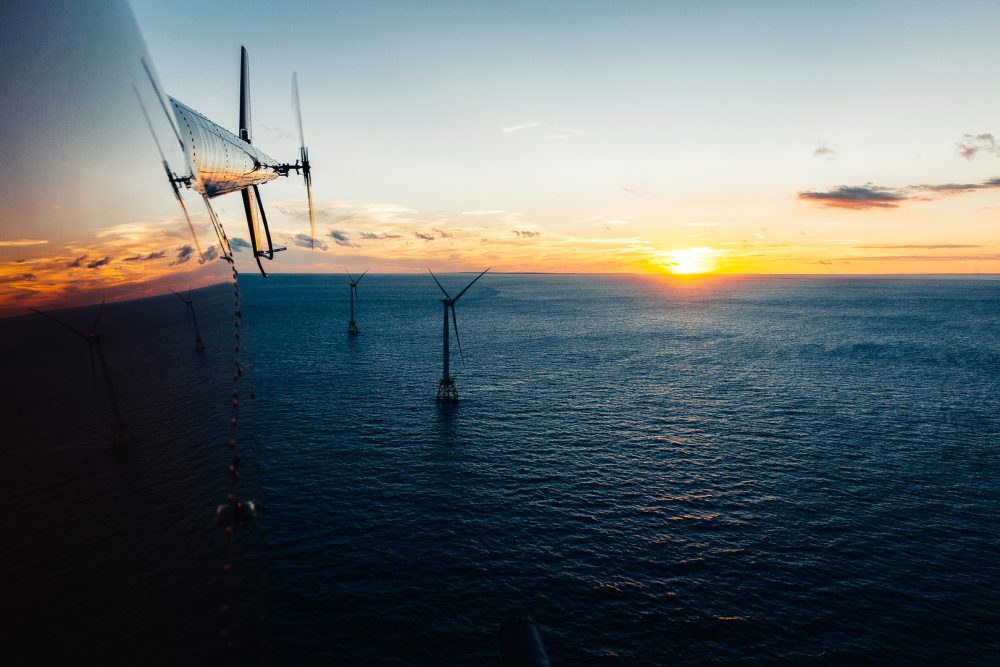
February 5, 2019

BLOWN AWAY
The annual Very Large Sporting Event played this past weekend in Atlanta is typically a bonanza for brands trying to show off their best stuff, so it was big news indeed that brewer Anheuser-Busch aired a commercial highlighting that its flagship beer, Budweiser, is made using wind energy. And not just any wind energy: The spot featured Oklahoma’s Thunder Ranch Wind Farm, operated by Enel Green Power and powered by 120 GE turbines. A new report from the American Wind Energy Association reaffirms GE’s wind turbines are everywhere in the energy landscape — it became the top U.S. manufacturer of wind turbines in 2018, capturing 40 percent of the market.
The wind beneath its blades: For GE, the No. 1 slot represents more than 25,000 turbines dotting American fields and over 40 gigawatts of installed capacity, out of a global total of more than 35,000 turbines and upwards of 60 GW. Not just a major player, GE is also a particularly ambitious one. The company is hard at work developing one of the world’s largest onshore wind turbines, the Cypress platform, as well as the world’s most powerful offshore turbine, the Haliade-X. The integration of renewable sources into the electrical grid is the future of energy, and GE knows which way the wind is blowing: The company recently announced the consolidation of its Grid Solutions business into a streamlined GE Renewable Energy.
Learn more here about how GE Renewable Energy is harnessing the winds of change — and breeze further on down this issue of the GE Brief to learn how the company ensures the electrical grid is reliable, robust and renewable-friendly.
ENGINE OF PROGRESS
On Friday the Department of Defense awarded a $517 million contract to GE to deliver a next-generation engine for two of the Army’s workhorse helicopters, the Black Hawk and the Apache. GE’s engineers have been training for that job for decades. The company delivered the original engine powering the choppers, the T700, in 1978. The new model, the T901, matches the physical footprint of the former model and can be seamlessly swapped in, but the differences are as notable as the resemblances: The T901 incorporates next-gen materials and manufacturing techniques that’ll make these old workhorses look like Pegasus.
Workhorse power: GE brings two futuristic technologies to the new engines: ceramic matrix composites and 3D printing, which allow engineers to create parts that provide great strength and greater fuel efficiency at a lighter weight. The T901 is the latest recipient of such advances: They’re also a vital part of LEAP engines, which power Boeing and Airbus passenger jets and are manufactured by CFM International, a 50-50 joint venture between GE and France’s Safran Aircraft Engines. But cruising at 35,000 feet is a luxury Army helicopters only wish they could enjoy — GE designed the T901 to military specs, which include tolerance for a whole lot of sand.
Read more here about the development of the T901 engine, which will find its way into thousands of aircraft in service over the next six years.
THE NERVOUS SYSTEM OF THE 21ST CENTURY
Last year, homeowners across Europe were surprised to notice that the electric clocks on their stoves were lagging behind. It was even more frustrating to know that the problem originated with a geopolitical dispute in the Balkans that led to a reduction in power output across the continent — long story — thereby illustrating the delicacy inherent in a massive electrical grid. As chief technology officer of GE Grid Solutions, now part of GE Renewable Energy, Vera Silva works with her team to bring electrons from GE turbines to homes and businesses. They guard against these types of disruptions and many more, ensuring the grid is robust, steady and secure — and that it’s prepared for a future of more renewable energy sources. Ahead of DistribuTECH, one of the world’s largest power distribution and transmission conferences, Silva sat down with GE Reports to tell us what’s what.
Powerful questions: “The grid is the vital organ of the electricity system, connecting generation and consumers from neighborhoods to continents,” Silva said. “It has been orchestrating the system on a milliseconds basis since the dawn of electrification.” For most of that history, the flow of electricity has been downward, from generation plants to the transmission grid to consumers — but that’s changing. The future of power involves a grid that consumers can draw from as well as contribute to, as when their solar panels generate extra juice. It also involves more sophisticated ways to store power until the moment it’s needed.
How can advanced software help orchestrate the grid like a maestro conducting a symphony? Learn more here.
COOLEST THINGS ON EARTH
1. Printing With Light
Scientists at the University of California, Berkeley, devised a technique to use rays of light to 3D-print objects, naming their invention the replicator, in a nod to the “Star Trek” contraption whose command is your wish, materially speaking.
2. Jenga-Playing Robot
A robot created by engineers at MIT can play the game of Jenga. Why does that matter? Any machine with the fine motor skills and spatial reasoning to excel at that game will also excel on an assembly line building delicate machines — say, cellphones.
3. Diamonds From Scratch
In the past, diamonds were created deep within the bowels of the earth, under conditions of extreme heat and pressure. That’s changing in North Carolina, where researchers have figured out a room-temperature method for turning carbon fibers into diamond fibers.
Read more about this week’s Coolest Things on Earth here.
QUOTE OF THE WEEK
“The grid is the largest Swiss clock ever made. Fine-tuning and precision are everything.”
— Vera Silva, chief technology officer at GE Grid Solutions
Quote: GE Reports. Image: Chris New for GE reports.
ENJOY THIS NEWSLETTER?
Please send it to your friends and let them know they can subscribe here.




